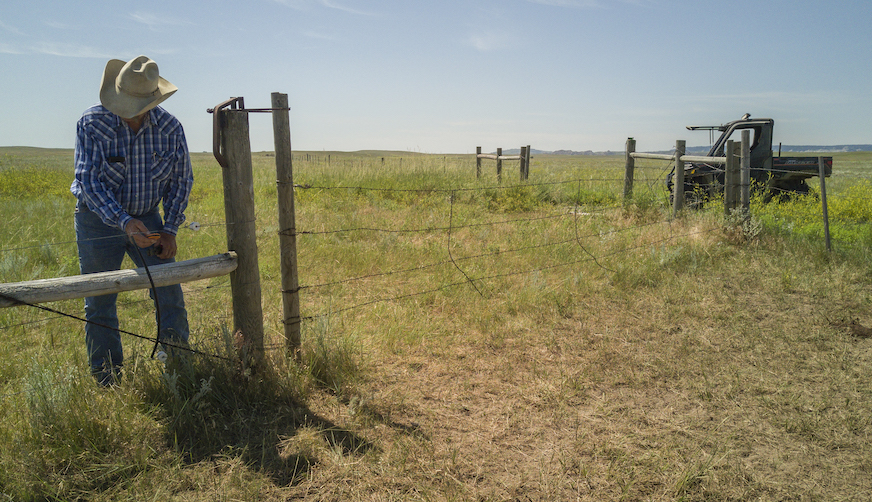Join our Mailing list!
Get all latest news & be the first to know about upcoming events.
Linda Gilbert, the most recent addition to the South Dakota Grassland Coalition’s board of directors, isn’t new to the cattle industry. Linda was raised alongside cattle and horses in western South Dakota. She inherited the land ethic of her father Ken Halligan, a lifelong cattlemen and land steward. A veteran of the cattle industry and advocate for her heritage, Linda was appointed by Secretary of Agriculture, Tom Vilsack, to serve on the Cattlemen’s Beef Board in 2010. Linda has also served for a number of years on the National Board of Beef Council and Public Lands Committee.
Linda and her husband, Ray, run a cow-calf operation outside of Buffalo, SD. The two work around an arid, practically high desert climate averaging only ten to twelve inches of rainfall per year. This dry country requires a delicate balance between running a profitable cattle business and careful land management. Like many of the SDGC board members, the tough economic climate of the 80’s pushed Ray and Linda to make drastic changes in their management style. They did plenty of research and landed on a rotational grazing system they thought might work on their ranch. They added around twenty miles of electric cross fencing and increased their stocking rate by three fold. The two were able to take in yearlings and run a herd of sheep to supplement the cattle business. Linda found these changes helped their business and also matched the “take care of the land, it will take care of you” philosophy of her father.

After about three years, Ray and Linda started seeing the land change as a result of their grazing system.
Places on the ranch that were historically hardpan began growing feed. Perennial native grasses began gaining a competitive advantage over invasive species they had around for years like prairie sand reed. “Since we started rotational grazing, we’ve never sold cattle because of drought,” Linda said as she listed the unexpected positive results of their grazing system. It’s taken plenty of time to work the kinks out through trial and error, “we’re still tweaking things each year. There are so many different methods of rotating. You just have to figure out what works on your place,” she said, “find what works in your area and have an open mind. Be ready for change and be an observer. If you truly want to improve, watch your cattle and watch what your grass is doing.” When I asked the two if they had any advice for folks who are beginning their own ranch or thinking about changing an existing model Linda said, “Be ready to learn, observe, and adapt.” Ray and Linda discovered that there are many elements of a grazing system that vary from place to place, but one rule they live by is to always start in a new pasture. Each spring they always start their rotation on a different pasture rather than grazing the same plants at the same time every year. Practicing this year after year has allowed desirable native grasses to thrive. They’re also sold on fence line weaning. Ray and Linda both shook their heads, wishing they had done it years before: “The cattle are less stressed, they don’t get sick, and there’s really no shrink,” Ray said.
Thinking back over the years, Ray added that he wishes they had taken more pictures of the progress they’ve made in their pastures over time. “I wish we would have done more grass monitoring and kept track of the data,” Ray said. He also recommends doing thorough research on electric fence material. As a new member of the quickly growing organization, Linda is excited about the work the Coalition does for South Dakota land managers. She looks forward to being a part of the Coalition as it expands in the state. She believes that the organization “is a great opportunity for producers to learn from other producers. The coalition does a great job of sharing research.” The Gilbert Ranch arrived where it is today by sifting through research, picking out the good ideas, and adapting them to their ranch through trial and error. The Coalition helps producers speed up this process and offers educational support for people looking to improve their land while getting the most out
of it.
Ray and Linda agreed that if they could change anything about the way they did things in the early years of their ranch they would have gotten out more. “One of our biggest mistakes as young ranchers was that we worked all the time and never left the place. Talking to other producers and learning about different ways of doing things would have helped us a lot,” Linda said, “Networking is really important and it’s something the Coalition does well.”
Written by Kate Rasmussen.
Get all latest news & be the first to know about upcoming events.